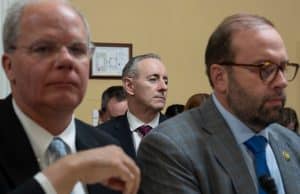Are you wondering why your electricity bill skyrocketed in the past month?
If so, you are not alone. Regardless of which utility company supplies your electricity, Pennsylvanians have seen a huge increase in their bill. Since June 1, energy prices from Met Ed, PECO, and PPL rose by 8.2, 13.0, and 15.7% respectively.
For those Pennsylvanians interested in learning more about why energy prices have increased, environmental advocacy groups Conservation Voters of Pennsylvania and Citizens for Pennsylvania’s Future (PennFuture) just released part 2 of their webinar series, “Why is My Electricity Bill so High?”
While part 1 was released back in March, part 2 highlights the price hike that hit many Pennsylvania consumers at the beginning of June. The webinar, available in full on Youtube, contextualizes the issue and provides helpful tips for homeowners looking to lower their electricity bills.
Rob Altenburg, Senior Director for Energy and Climate at PennFuture, discussed the role of PJM Interconnection in facilitating these price increases. PJM is the multi-state power grid operator which coordinates the movement of electricity from energy generators to utility companies.
PJM, along with other regional power grid operators, is facing increased demand for electricity, mostly owing to the growth of data centers used for artificial intelligence and the mining of cryptocurrency. At the same time, the supply of power is falling behind. PJM is currently facing a bottleneck of proposed projects awaiting approval, all of which would increase the supply of electricity once they come on the power grid. Over 95% of backlogged projects are in clean energy, like solar panels and wind farms. Even more confusing, said Altenburg, is that “solar is often the lowest cost energy available. So it’s the low cost generation not being able to join the grid.”
Republican lawmakers and fossil fuel company spokesmen have blamed renewable energy projects for price hikes (a claim debunked in a 2024 study by New Energy Innovation) and argued that expanding natural gas production in the United States will ease energy costs.
Altenburg, however, noted that fossil fuel is not only more expensive, but significantly less reliable than clean energy. Speaking of the power outages during Winter Storm Elliott which swept the U.S. and Canada during Christmas, 2022, he said, “24% of all the generation on the grid failed in the middle of a winter storm … 70% of those failures were gas plants.”
Instead of recognizing these issues and transitioning to renewable energy, Pennsylvania continues to put “ a lot of our eggs in one basket,” said Altenburg. Natural gas currently makes up 60% of our energy production, while PJM recently allowed fifty new fossil fuel projects to jump the queue for approval over clean energy ones.
PennFuture and Conservation Voters of Pennsylvania, “Why is My Electricity Bill So High?” (Screenshot)
Fortunately, there are efforts among state representatives to hold PJM more accountable for these price hikes. Pennsylvanians could have seen higher bills had Governor Shapiro not filed a lawsuit with the Federal Energy Regulatory Commission (FERC) to prevent PJM from hiking prices by a whopping $21 billion for 65 million residents. In his talk, Altenburg was critical of PJM’s auction system for allowing prices to skyrocket, and Shapiro successfully capped the cost to alleviate the burden on consumers.
House Bill 1599, a legislative effort to increase transparency within PJM, is also working its way through the state legislature. Enjoying bipartisan support, the bill seeks to eliminate secretive voting at PJM and require PJM members, according to Michael Mehrazar, Advocacy Manager at Conservation Voters of PA & PennFuture, “to provide a brief explanation…of how each vote was cast, and how it serves the public interest.” The concern among legislators is that PJM’s voting members—those with financial interests, such as fossil fuel companies—have acted behind closed doors in shaping policy.In a call to action, PennFuture and Conservation Voters of Pennsylvania urged Pennsylvanians to contact their legislators to support energy transparency and sign up for future efforts to increase transparency and energy efficiency, using the QR codes below.






